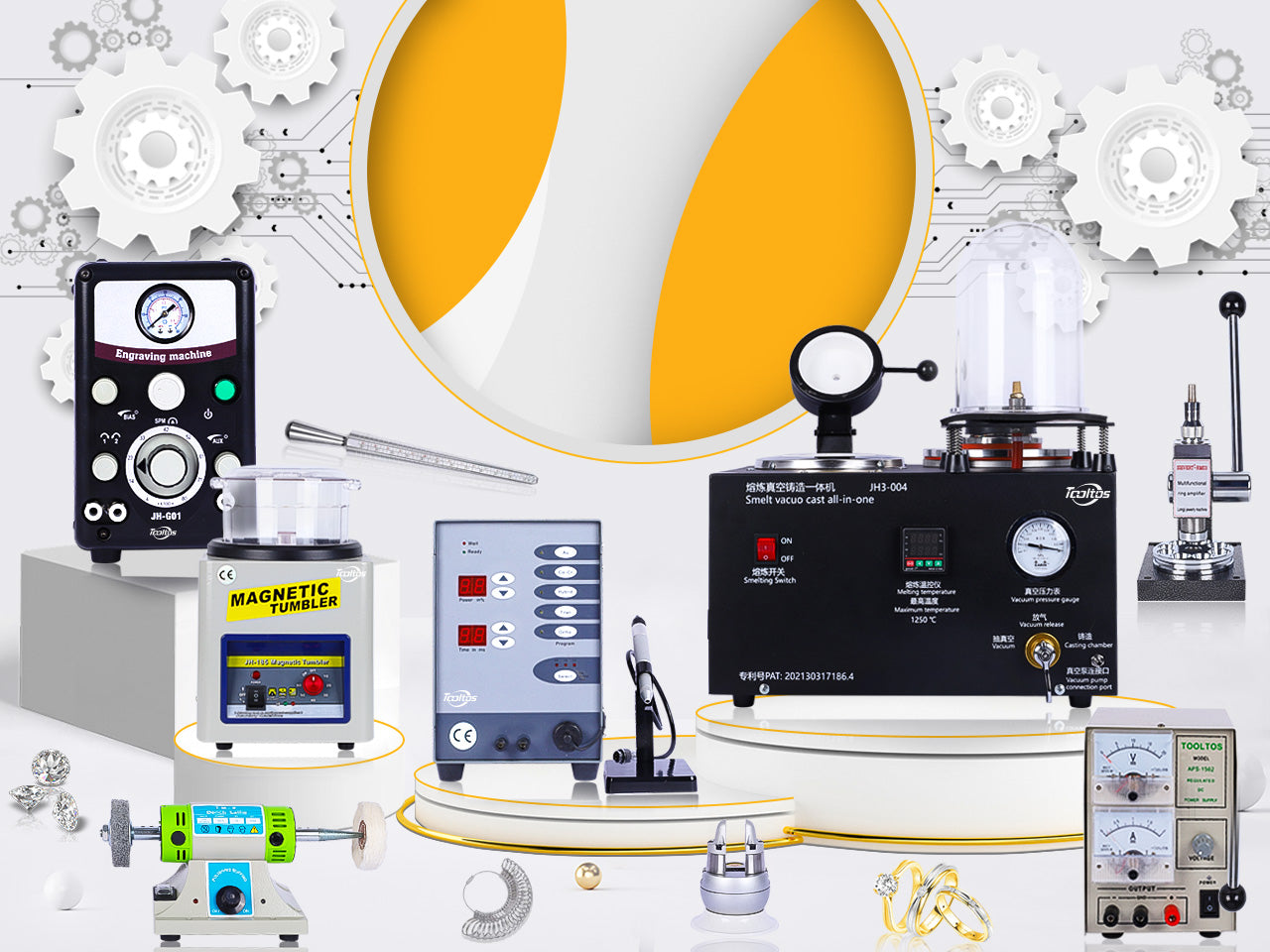New to jewelry polishing and want to learn more about the technical terms used in the jewelry manufacturing process?
Use our polishing glossary to learn about all the tools and terms associated with the polishing process.
Polishing
The jewelry polishing process removes small amounts of dirt from the surface of the metal, leaving a smooth surface that is then prepped and prepared for polishing.
Buffing and Polishing
Polishing and buffing are two processes that give jewelry its final high shine. Although often used together, they are two separate processes.
The different stages of polishing include
Pre-polishing - Initial smoothing and polishing with a very coarse polish. Polishing is an abrasive process that removes only a small amount of surface. It removes small scratches left by sanding and smooths the surface, but does not produce a bright polished finish.
Final Polishing - The final mirror finish is achieved by polishing. Polishing uses a harder compound such as rouge. When rouge is used, there is little to no cutting action; it burnishes the metal, moving the surface to smooth out the fine scratches left by polishing.
Satin Finish - A less glossy surface with a softer texture. these are used dry and contain no polish.
Polishing Motor
Polishing motors allow for high-speed polishing and are used in conjunction with polishing wheels and polishes. Polishing motors are available in a variety of designs (e.g., suspended flexible shaft motors and polishing motors) with speeds ranging from 5,000 rpm to 18,000 rpm.
When using the polishing motor, it is recommended that you work directly below the center of the polishing wheel. Never place the item above or below horizontally as this will cause the polishing wheel to grab the item from your hand. A certain amount of pressure should be applied to the polishing wheel so that you can feel the cutting action, but do not apply too much force and cause the motor to slow down as too much pressure will not result in a better finish or faster polishing speed, but too little pressure is also ineffective; try to find a suitable intermediate value (which will become easier with practice).
Polishing and buffing wheels
A polishing wheel is a wheel-like add-on that is used with polish and added to a flexible shaft motor or polishing motor for polishing jewelry.
Most polishing wheels are between 2 - 6 inches in diameter. It can be overwhelming to learn about all the different types of polishing wheels - the list below is a great place to start.
Polishing wheel types include:
Sewn buffing wheels: The more rows of stitching, the stiffer the buffing wheels will be. Sewn buffing wheels are typically used with a cutting compound like tripoli at the pre-polish stage.
Loose buffing wheels: Loose buffing wheels are characterized by several segments of material with a single row of seams or no seams near the center. Most commonly used for final polishing with rouge, they flare out and cover a wide range of areas, allowing them to be used in hard-to-reach places and providing a smooth polished surface.
Bias-type buffing wheels: Excellent for both cutting power and flexibility, bias-type buffing wheels are typically used for intricate work that requires varied degrees of cutting and finishing.
Sisal buffing wheels: Usually made with strong cloth and used for aggressive cutting and polishing, most often used with Stainless Steel.
Hard-felt buffing wheels: Ideal for flat surfaces and sharp edges as they maintain smooth lines, however, care should be taken when using for jewelry purposes as these can produce lines or rings on pieces.
String buffing wheels: Soft buffs used on precious metals or plastics
Buffing and polishing wheel materials include:
- Cotton
- Calico
- Felt
- Wool
- Suede
Polishing Compound
Polishing compounds are the greases, waxes, or oils that are abrasive and added to buffing mops. Usually bought in small bars they are used in conjunction with polishing motors and mops, working to smooth and buff metals. The terms buffing compounds and polishing compounds are usually used interchangeably. Jeweler’s rouge is one of the finest polishing compounds helping to bring out the highest shine of the material you’re working with.
Tips for using polishing compounds
Do not apply too much polish to the buffing/polishing wheel, it is recommended to apply polish when the results indicate it is needed. Move the buffing wheel consistently to obtain an even finish, if left in one position too long it may remove detail and alter the shape of the piece. Move the item in all directions and positions possible so that the polishing wheel touches all areas, this cross buffing/polishing will also result in a brighter item. If solder joints need to be polished, pass the polishing wheel through the joints rather than in contact with them so that they are not ground off.
While it can be difficult at first, you can easily grasp polishing terms and incorporate them into your creative process to better understand the craft. Enjoy polishing!


0 commenti